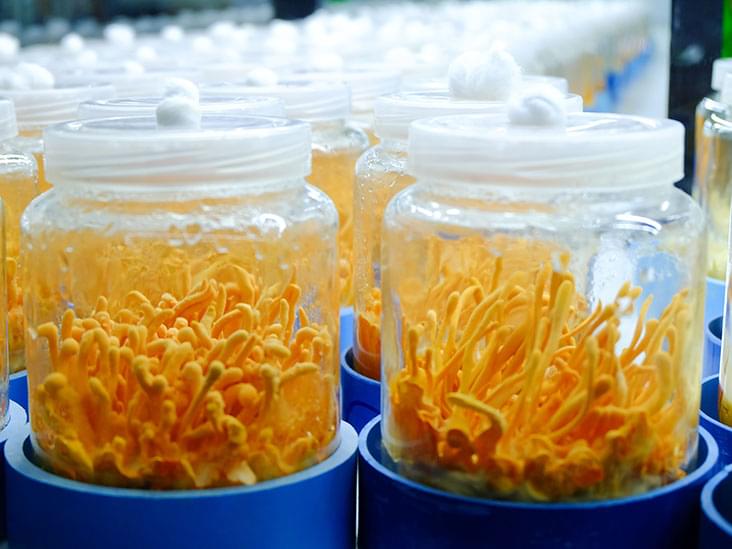Early Earth was quite the place.
For the first time, astronomers have been able to estimate the length of the day and the distance to the Moon as it was almost two and a half billion years ago.


A long-term antimatter storage device that may be energized by a low power magnetron and can function autonomously for hundreds of hours on the energy provided by batteries. An evacuated, cryogenic container is arranged with a source of positrons and a source of electrons positioned in capture relation to one another within the container so as to allow for the formation of a plurality of positronium atoms. A microwave resonator is located within the container forming a circularly polarized standing wave within which the plurality of positronium atoms rotate. Radioactive sources for small stores and low energy positron accelerators for large stores are used to efficiently fill the device with positronium in seconds to minutes. The device may also be arranged to provide for the extraction of positrons. A method for storing antimatter is also provided.

The present set of complementary inventions refer to a system for the practical and inexpensive procurement of huge amounts of energy derived from the principles of matter-antimatter generation and annihilation. The generator will comprise the functions of generation, amplification, concentration and collision of photons within a specially designed self-reflective chamber; the generation of particles of matter and antimatter derived from the collision of photons; the ionization of atoms and the production of avalanches of electrons and positrons within a specialized collecting chamber; the separation of electrons and positrons by the action of powerful rotational electromagnetic fields; and, the conversion of said avalanches of electrons and positrons into electrical power.

The invention relates to the use of the collision of matter and antimatter as a means of propulsion in a spacecraft, to the control system for said engine and to a block diagram of the connections for same, in which all of the functions are divided into modules. Said invention refers to a form of propulsion that is totally different to those know at present, which enables spacecraft to move considerably faster in outer space and to reach up to one third of the speed light owing to the controlled collision of matter and antimatter. The control system works in conjunction with the engine in order to control the collision and to maintain the optimal parameters for performing said movement.
Wind and solar power are intermittent, generating power when it’s available rather than when it’s needed, so the green energy transition will require huge amounts of energy storage. This could end up taking many forms, from conventional lithium-based “big battery” installations, to flow batteries, silicon phase-change batteries, molten salt batteries, iron-air batteries, gravity batteries, carbon dioxide expansion batteries, and other more unusual ideas like buoyancy batteries.
Each has its own advantages and disadvantages in terms of efficiency, size, location, installation costs, operating costs, input and output power ratings, longevity and how long it can store the energy for. That’s good, since different solutions will fill different needs – some backing up the power grid during instantaneous demand spikes, others smoothing out the mismatched daily curves between demand and renewable supply, and others still helping to address seasonal supply drops, like when solar drops off through the winter.
Here’s another for the pile, coming out of Finland. Polar Night Energy says it’s just opened its first commercial sand battery at the premises of “new energy” company Vatajankoski, a few hours out of Helsinki.

Precision measurement of how a proton’s structure deforms in an electric field has revealed new details about an unexplained spike in proton data.
Nuclear physicists have confirmed that the current description of proton structure isn’t perfect. A bump in the data in probes of the proton’s structure has been revealed by a new precision measurement of the proton’s electric polarizability performed at the U.S. Department of Energy’s Thomas Jefferson National Accelerator Facility. When this was seen in earlier measurements, it was widely thought to be a fluke. However, this new, more precise measurement has confirmed the presence of the anomaly and raises important questions about its origin. The research was published on October 19 in the journal Nature.
“There is something that we’re clearly missing at this point. The proton is the only composite building block in nature that is stable. So, if we are missing something fundamental there, it has implications or consequences for all of physics.” —


The wearable robot helps patients who are afraid of needles.
A recent study in Japan has revealed that a hand-held soft robot can improve the experience of patients while undergoing medical treatments, such as injections and other unpleasant therapies or immunizations.
Inspired by vaccinations during Covid
The research was inspired in part by the numerous needles people had to endure while being vaccinated against Covid-19. Some people had an aversion to these needles, which led to less people getting vaccinated, reducing the rates. Although there have been numerous studies explaining patients’ pain and anxiety during treatment, there have been few solutions studied or discussed to help patients.

It can download 230 million photographs in one second.
We all want more internet power and now we may just get it. A single computer chip has transmitted a record 1.84 petabits of data per second via a fiber-optic cable.
230 million photographs downloaded in one second
That amount exhibited enough bandwidth to download 230 million photographs in that time. The initiative was led by Asbjørn Arvad Jørgensen at the Technical University of Denmark in Copenhagen.
Knowing a meteorite’s origin is key to understanding the universe.
An international team of scientists has been exploring the samples of asteroid Ryugu brought back to Earth in 2020 by Hayabusa2 and may have stumbled upon their source, according to a press release published by the Natural History Museum on Thursday.
An extremely rare group of meteorites
“Carbonaceous chondrites, such as the Winchcombe meteorite which fell to Earth and was retrieved in Gloucestershire in 2021, are an extremely rare group of meteorites which have been known to contain organics and amino acids – ingredients for life. They are the most primitive and pristine materials of the solar system and can provide unique information on where water and the building blocks of life were formed, and what planets are made from,” stated the press release.